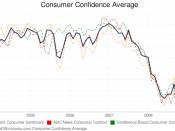In a business context, diversity is approached as a strategy for improving employee retention and increasing consumer confidence. The "business case for diversity", as it is often phrased, is that in a global and diverse marketplace, a company whose makeup mirrors the makeup of the marketplace it serves is better equipped to thrive in that marketplace than a company whose makeup is homogeneous. Another part of the business case is how well a company utilizes its diversity. This is often referred to as inclusion. If a company is diverse in makeup, but all the decision makers are of one primary group, diversity does not add much value. Business diversity consultants and diversity trainers often treat the social consequences of diversity as secondary; their primary focus is to enable the company to function in a heterogeneous or global economy. Diversity issues change over time, depending on local historical conditions. For example, "transgender" issues are now coming to the fore in the U.S.,
though it is far from the radar screen in many countries. (See, for example, Transgender Workplace Diversity blog) Companies with diversity programs are usually national or international in scope, or are composed of large groups of workers who come from differing backgrounds.
Different kinds of diversity exist, e.g. superficial diversity (e.g. differences in gender, ethnicity, nationality) and deep-level diversity (e.g. differences in knowledge and differences in values) (Harrison et al, 2001 or 2002; Jehn et al 1999). Increasing amounts of interaction between individuals reduce the importance of superficial diversity and increase the importance of deep-level diversity. With regard to superficial diversity: its negative effects are stronger to the extent that a faultline develops, separating a group into clear subgroups. This occurs when observable characteristics of individuals in a group correlate, e.g. all the marketeers in a group are young...


